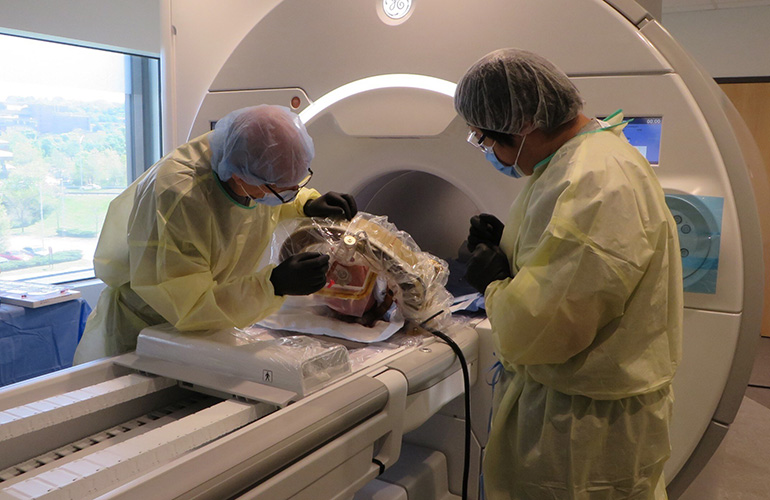A Chinese robotics company has just revealed a major upgrade to its humanoid robot, showing how quickly this technology is advancing toward real-world use.
Meet the GR-2
Shanghai-based Fourier Intelligence launched the GR-2 robot marking a significant step up from its previous model. The new robot stands 5 feet 9 inches tall and weighs 139 pounds, making it about the size of an average adult.
But the real improvements are in what it can do. The GR-2 is much stronger than its predecessor, with motors that can generate 280 pound-feet of torque - enough power to lift heavy objects and assist people who need physical help.
Most importantly, this robot finally has proper hands. The previous GR-1 model had to rely on purple grab bars attached to its hips, giving it an unfinished, medical equipment look. The new version looks much more complete with its sleek plastic body covering and functional hands.
Hands That Can Actually Feel
The GR-2's new hands represent a major breakthrough. Each hand has 12 different points of movement and can sense how much force it's applying. This means the robot can adjust its grip in real-time, feeling out different shapes and materials without crushing delicate objects.
While each hand can only carry about 6.6 pounds - not enough for heavy lifting - this level of dexterity opens up many possibilities for helping people with daily tasks.
The hands still aren't as sophisticated as human hands, which have about 27 different movement points. Tesla's Elon Musk has claimed his company's Optimus robot will have hands with 22 movement points "later this year," but that remains to be seen.
Designed to Help the Elderly
Unlike some humanoid robots being developed for factory work, the GR-2 is specifically designed as a home helper. Fourier Intelligence created it with elderly and disabled people in mind, particularly in countries like Japan and China where aging populations need more care than human workers can provide.
The robot's grab bars aren't just for show - they're positioned so people can hold onto them for support when getting in and out of beds or wheelchairs. This medical focus explains why the robot prioritizes strength and stability over speed.
Learning in Multiple Ways
The GR-2 can learn new tasks through several methods. Operators can control it remotely using virtual reality, give it direct commands, or physically move its arms and hands to show it what to do - a technique called "lead-through programming."
The robot works with common robotics software, making it easier for researchers and companies to develop new applications for it.
Still in Development
Despite its impressive capabilities, the GR-2 isn't ready for consumers yet. Fourier Intelligence is manufacturing these robots primarily for research partners and development programs rather than individual buyers.
The company faces the same challenge as other humanoid robot makers: the hardware is getting good enough for real-world use, but training the artificial intelligence to interact safely and effectively with people remains difficult.
The Bigger Picture
The rapid improvement in humanoid robots is striking. Just over a year ago, the GR-1 looked skeletal and unfinished. Now the GR-2 appears polished and capable, with working hands and human-like proportions.
This pace of development reflects the massive investment flowing into robotics companies. With the promise of unlimited cheap labor and dramatic increases in economic productivity, these companies are racing to bring humanoid robots to market.
While current robots still move somewhat awkwardly compared to humans, the technology is advancing faster than most previous innovations. Industry experts believe we could see practical humanoid robots in homes and workplaces within five to ten years.
What's Next
The GR-2 represents just one step in the rapid evolution of humanoid robots. As these machines become more capable and their AI systems more sophisticated, they could transform how we think about work, caregiving, and human-machine interaction.
For now, they remain expensive research tools. But given the current pace of improvement, that may not be true much longer. The age of practical humanoid robots appears to be approaching faster than many people expected.


















